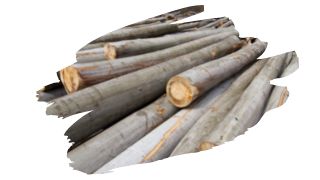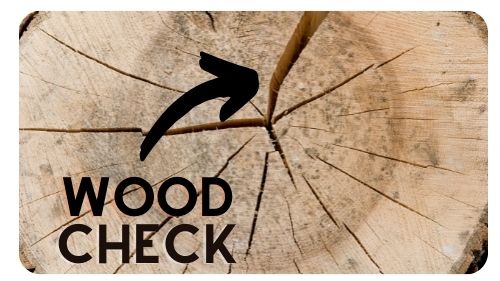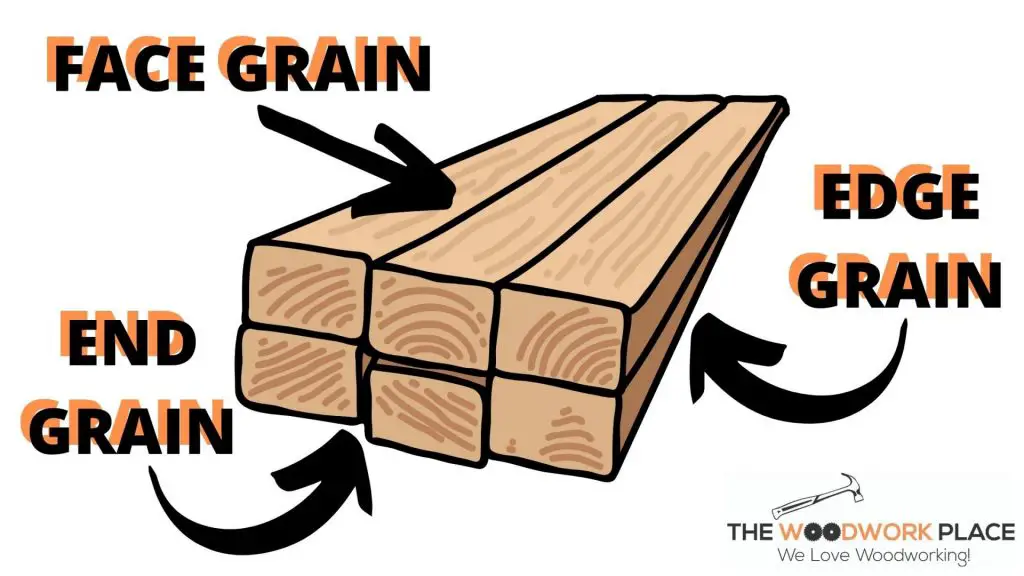No matter your carving style, choosing the right wood to match your carving technique is important.
Everything from wood density to its stability can all factor into whether or not that log can really hold your carved designs.
So, where does this leave a wood like Beech wood? Is this particular timber suitable for woodcarving?
Well, in this post, you will learn why the so called Janka rating of wood matters when it comes to wood carving. You will also discover exactly how hard Beech wood is — and what kind of carving technique it’s suitable for.
And keep reading to find out why Beech wood can sometimes crack — and learn what you can do to prevent it from happening.

This post may contain affiliate links to products that we receive a commission for (at no additional cost to you). Learn more here.
What Is The Best Wood For Woodcarving?
The answer to this depends on your wood carving style.
Some carving styles use manual hand tools and require a light touch. So, these carving techniques require quite low density soft pliable woods.
On the other hand, there are some carving styles that need a heavier hand — and in some cases even require power tools. So tougher wood types are more suited for these styles.
OK…So What Types Of Wood Are Best For Different Carving Techniques?
Well, when it comes to light touch carving that uses hand tools, you should use pliable woods.
So for whittling, Basswood and White Pine are good choices, because these two timbers don’t require a lot of force to cut. And, these timber types also hold designs rather well too.
For styles that require a bit more force, (such as Chip Carving), then lumber like Black Walnut and Cherry, are ideal.
When it comes to intense carving styles — of the kind that require power tools — you need very tough timber. So, for styles like Chainsaw Carving, you need to use a tough timber like European Oak (a.k.a White Oak).
What About Beech Wood? What Type Of Carving Style Is Beech Wood Suitable For?
One of the first things you need to know about a woods suitability for a carving style, is its toughness.
Very soft woods are great for delicate precise cut carving. While heavy hard timbers are not.
And, one of the ways that we measure the hardness of a particular wood, is by checking its Janka rating.
That Janka rating measures how much force it takes to make a dent in a piece of wood. The higher the Janka rating, the more force it takes. And the more force it takes, then the harder the timber.
Now, when it comes to power tool carving styles, (such as wood turning), White Oak is a great choice wood for this particular style.
White Oak has a Janka rating of 1290 lbf. That means it will take 1290 pounds of force to make a dent in this tough durable lumber.
When we look at Beech Woods Janka rating, it is even harder than White Oak. That’s because American Beech has a Janka rating of 1300 lbf. And even European Beech surpasses White Oak, what with its 1450 lbf Janka rating.
So What Does All Of This Mean For Carving With Beech?
While Beech is hard enough to not tear apart, this lumber is not naturally resistant to rot. So, Beech is not a good choice for chainsaw carving — due to this techniques outdoorsy nature.
What’s more, this wood is far too dense and hard for whittling — especially once it’s dried out.
Still, you can use Beech wood logs for wood turning. And spalted Beech wood in particular can make for some fantastic looking wooden bowls.
Related Post: Is A Spalted Wood Cutting Board Food Safe?
Nevertheless, Beech wood — particularly when you’re working with green Beech wood — has a tendency to crack.
You see, green wood refers to any wood that has been freshly cut from a tree. At this stage, green wood has a lot of moisture in it (referred to as its moisture content). And that high moisture content makes it very easy to cut into Beech wood.
Nevertheless, as green Beech wood dries out, it shrinks and contracts. And, worryingly for your wooden bowls, if Beech wood dries too quickly, it will crack and form wood checks.

Now, this is not to say that Beech wood is highly prone to cracking — far from it.
Beech wood is fairly stable, and doesn’t wildly twist and warp — but this is only after it’s been seasoned.
Still, if you can prevent green Beech wood from drying too fast, you’ll minimize the chances of this wood cracking.
Related Post: How To Season Wood (7 Tips)
And What Do You Mean By A ‘Stable’ Wood?
Well, beyond woods toughness, another thing we need to check for is a wood types stability. You see, the more stable a wood is, then the less likely it’s to warp or form wood checks.
If a wood is stable, then it’s less likely to expand/contract each time it absorbs moisture (or dries out).
Now, generally, we prevent warping and checking by sealing wood. So, a moisture-resistant wood finish is enough to stop the worst effects of warping.
However, while we carve wood, there is no wood finish/seal protecting that timber. So, until you apply that final wood finishing coat, then wood checking can occur at the most inopportune moment.
And those unsightly checks and splits can ruin an otherwise perfectly crafted piece.
And How Do I Prevent Beech Wood From Drying Too Fast?
If you want to prevent it from cracking, then you need to slow down the speed at which it is drying out. And the best way to do that is to use an end grain wood sealer.
End grain wood sealers do precisely what they say — they seal the exposed end grain of lumber and logs.

That exposed end grain is where moisture escapes from a log the fastest. So by sealing the end grain, (before you begin carving), you can significantly slow down the rate of drying.
You can learn more about end grain wood sealers by checking out our post: How To Keep Your Landscape Timbers From Ever Warping Again
To Wrap Up, Here Are The 3 Key Takeaways From This Post…
- 1). Beech wood is a tough hardwood. It is even a touch harder than White Oak.
- 2). Beech wood can hold intricate details very well. However, once it is dry, it can become too hard for manual whittling.
- 3). Green Beech wood can crack if it dries out too quickly. But, you can slow down this woods drying speed by applying an end grain sealer.



